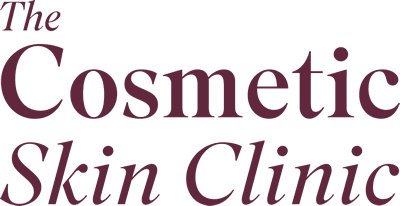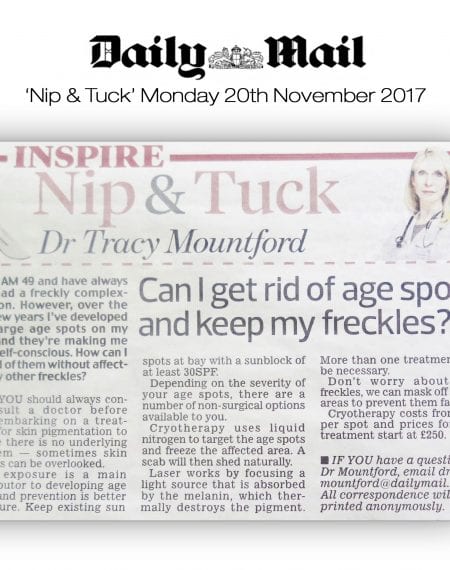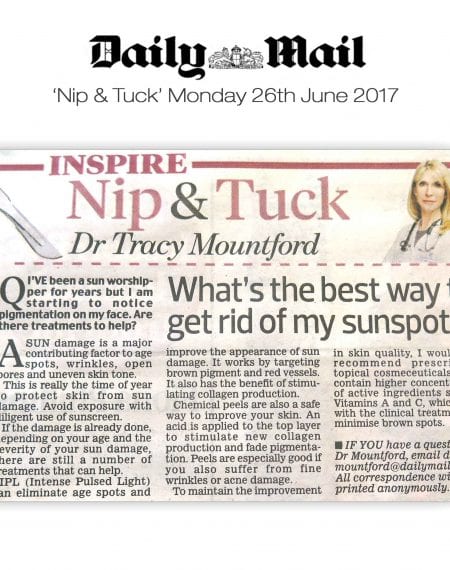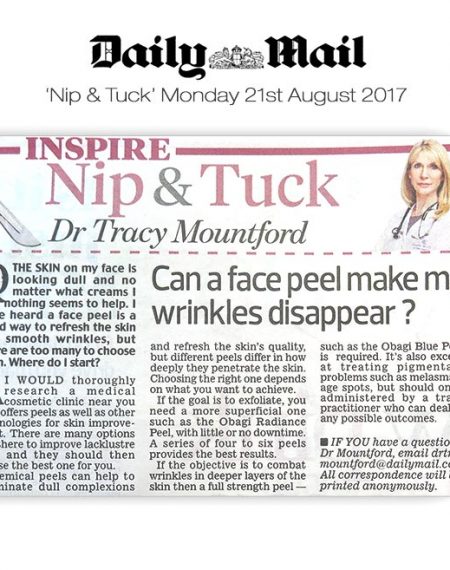Summary of Content
Click on the links below to jump to each section:
- What is Photodamage?
- What are the signs of Photodamage?
- Who is at risk for Photodamage and can it be treated?
- How will I know which treatment is right for me?
Q1 – What Is Photodamage?
Photodamage (sundamaged) skin is something few escape. This damage whether or not we intentionally sun tan, occurs with exposure to ultraviolet radiation (UV) over long periods of time. It is the Number 1 reason for skin ageing and accounts for approximately 90% or more of the signs of premature ageing. 25% of our lifetime exposure occurs before our teenage years.
Scientific studies have shown that repeated UV exposure affects the collagen fibers in the skin and its ability to repair itself. Damage to collagen results in a loss of skin elasticity, which results in the early appearance of wrinkles and other age markers. These markers manifest themselves in different ways: lines around the eyes and upper face, around the mouth (lipstick lines and loss of lip volume due to collagen breakdown) and lines/coarse texture of the skin in general including the neck, chest, arms and legs.
There are three main areas of Photodamage: epidermal, dermal and combination. Epidermal photodamage occurs on the outermost or epidermal layer of skin, while dermal photodamage is found in the deeper dermal layers. Combination refers to photodamage on both the outer and inner layers of the skin and can be seen by discoloration often referred to as Melasma.
Q2 – What are the signs of Photodamage?
Photodamage looks different on every individual. However, the signs of photodamage are most likely to appear on the face where exposure to sunlight has been significant. However photodamage can also affect other areas that are likely to have been exposed to sunlight like the neck, décolletage, arms and legs.
Most individuals with photodamage exhibit some or all of the following signs:
- Abnormal skin texture, including pebbling
- Deep or excessive wrinkles
- Large amounts of freckles or other discoloration (hyperpigmentation)
- Liver spots
- Skin inelasticity, sagging
- Permanent skin darkening and melasma
- Redness and inflammation
- Visible blood vessels (telangiectasia)
Q3 – Who is at risk for Photodamage and can it be treated?
Photodamage occurs largely due to exposure to UV rays.
The best treatment for photodamage is prevention. Wear sunscreen daily, a broad-spectrum sun screen SPF 30-50 in winter and at least 50 in summer. Additionally, as well as sun cream, you can also wear protective sun clothes, such as a wide-brimmed hat or for children protective sun clothing, especially in the height of summer, limit or avoid sunbathing. However, photodamage can be treated but dependent on the severity may not be able to be completely reversed.
Q4 – How will I know which treatment is right for me?
There are various treatments available to reduce the appearance of photodamage and help prevent the development of further damage. These include:
- Chemical peels, which remove damaged skin and improve the health of new skin
- Hyaluronic acid fillers which stimulate new collagen
- Muscle relaxants primarily for the upper face
- Laser resurfacing, which uses laser light to repair some of the UV light damage
- Ultrasound or radiofrequency to counteract some of the existing photodamage by stimulating collagen remodelling and encouraging the formation of new collagen.
- Tixel, with ablative and non-ablative settings, we can tailor the treatment to the individual patient without the downtime and side effects associated with that of regular lasers.
- Topical retinol based products
At your initial consultation with our qualified medical practitioners, your skin will be assessed and we will discuss a personalised treatment plan that’s tailored to you. Investing time and effort in your skin health is worthwhile.























